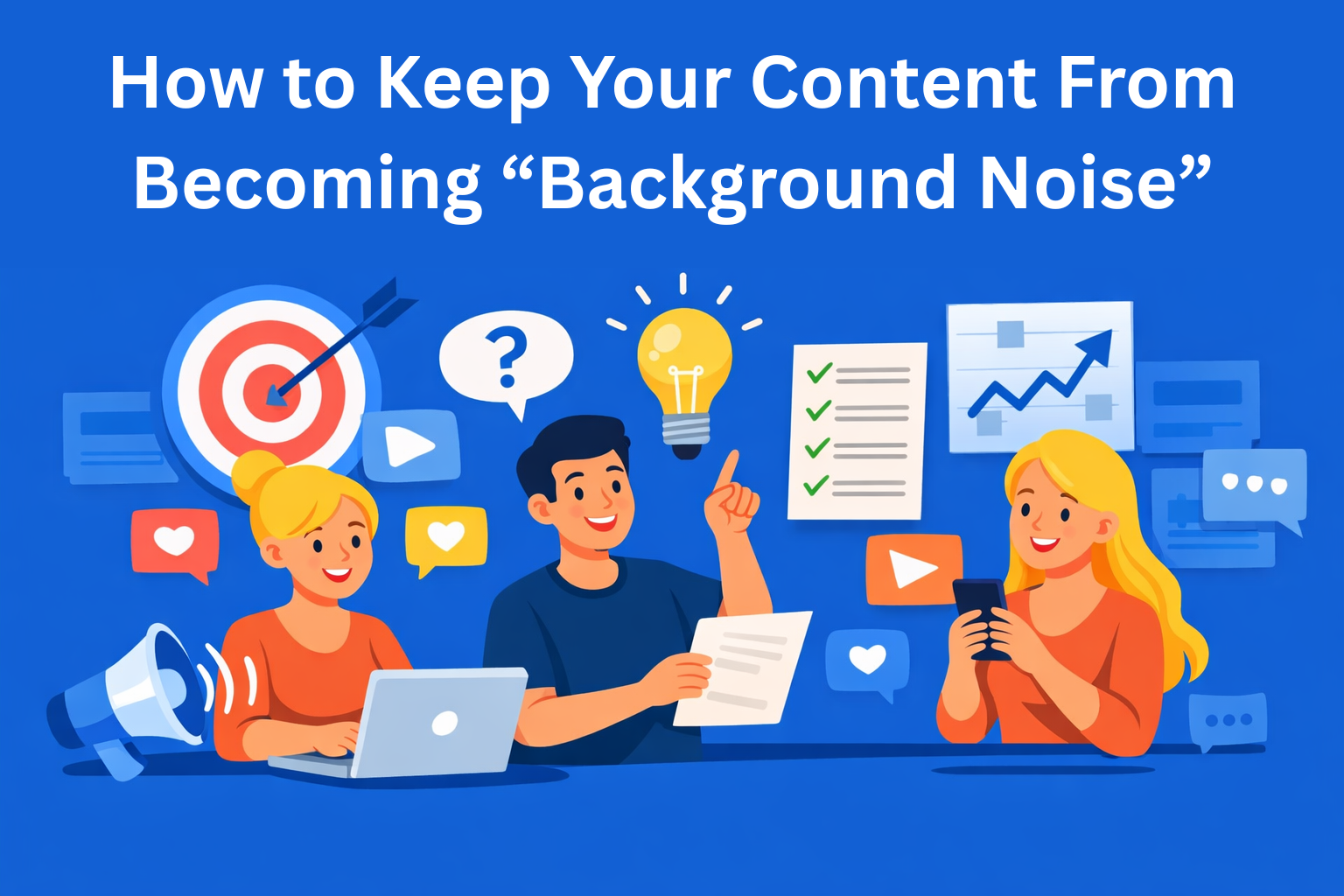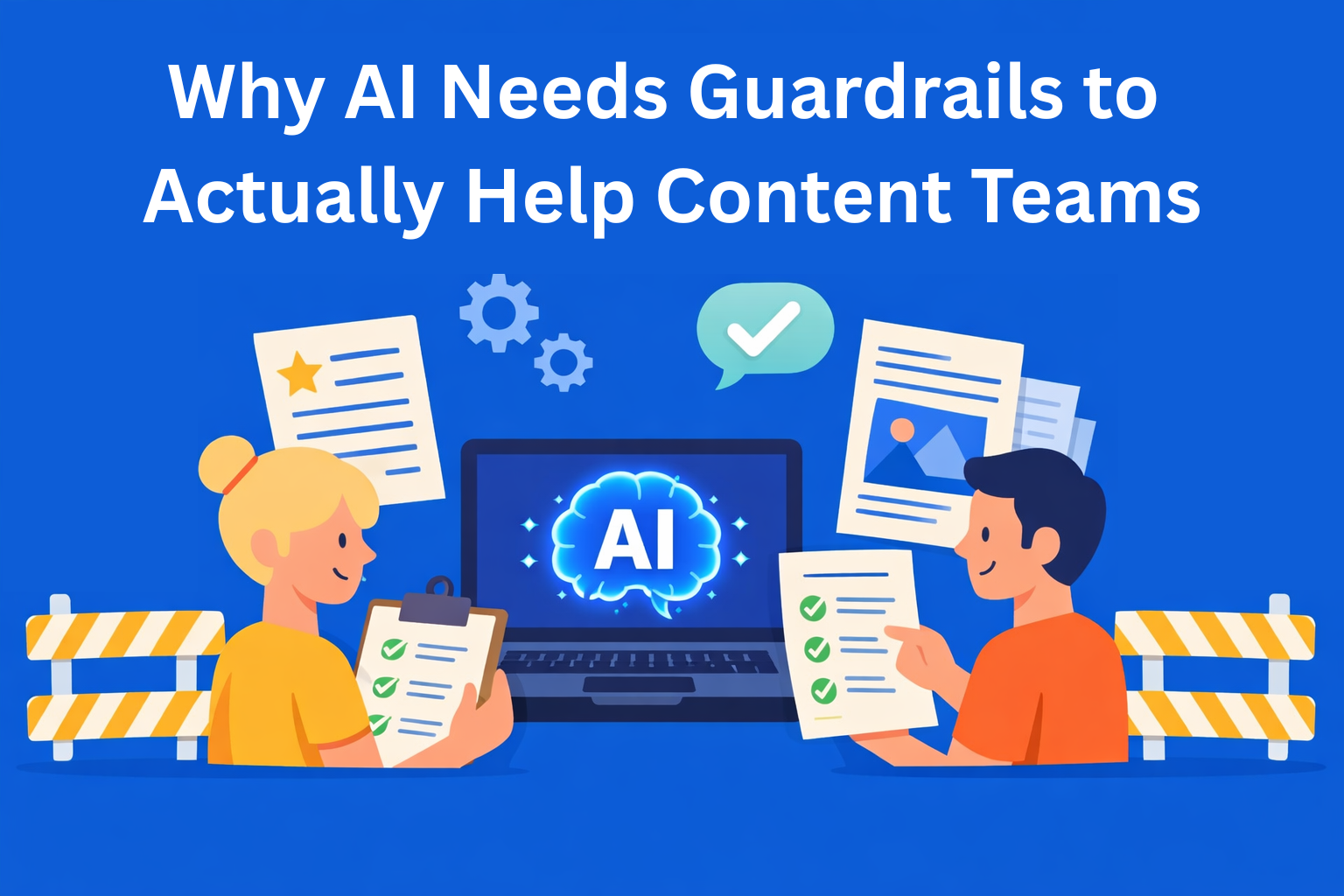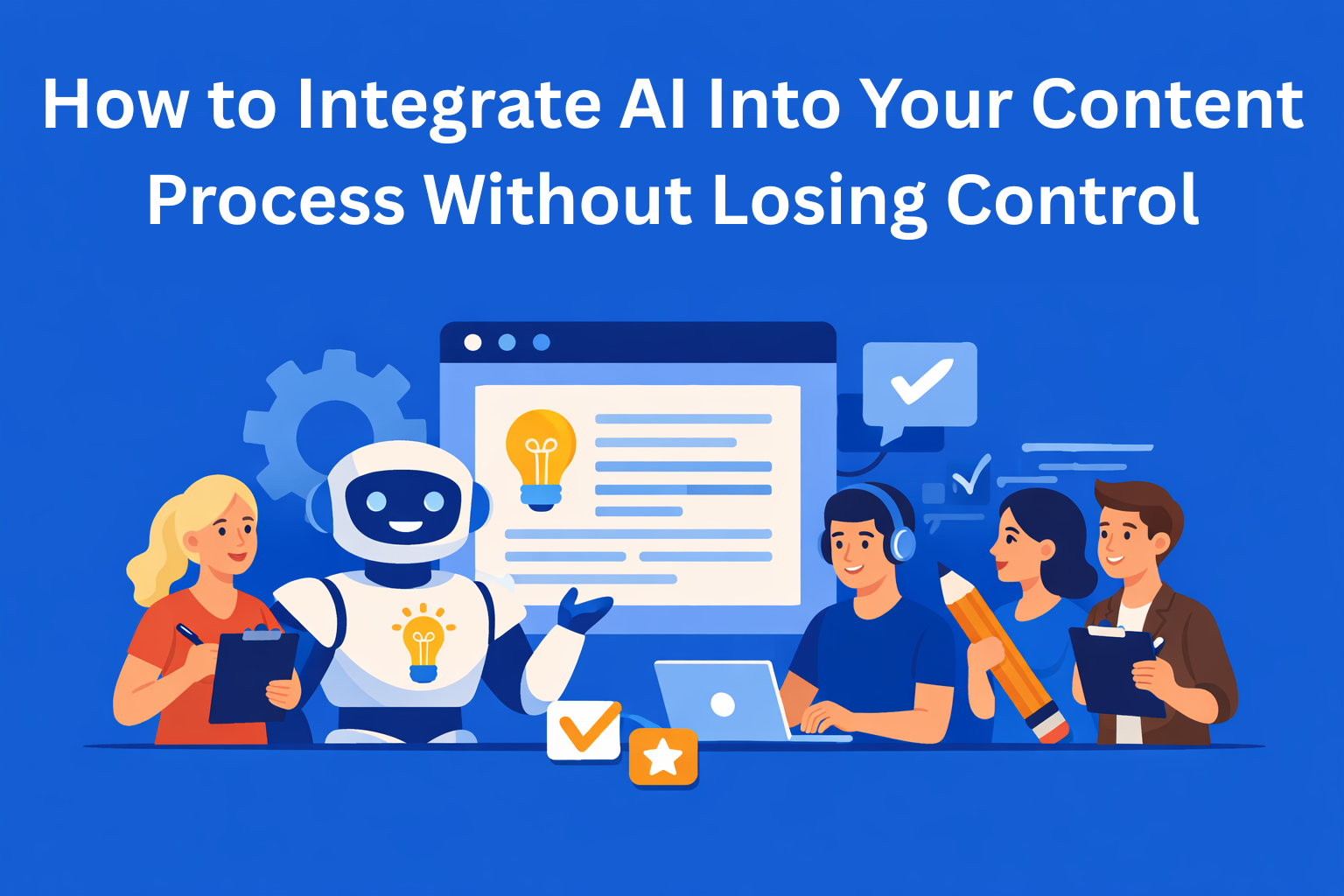The Art of Editing AI: What to Keep, What to Cut, and What to Rewrite
Learn how to edit AI-generated content like a pro. Discover what to keep, cut, or rewrite to turn raw AI drafts into high-quality, brand-aligned marketing content. Perfect for content teams using AI to scale content production.

Picture this: A content manager opens their laptop, drops a prompt into an AI tool, and within a minute, they’ve got a draft blog post. Sounds great, right? But then they read it. Everything “works” - the grammar is clean, the structure logical, the facts accurate. But... it’s flat. Sterile. Like no one actually had anything real to say.
Welcome to the new era of writing with generative AI. Where the first draft isn’t written by a person anymore - it’s generated by a model. And the real magic happens in the editing process.
If you’re a Head of Content, VP of Marketing, or leading a content team, you know the game has changed. It’s no longer enough to know how to write well. Now, you need to know how to edit AI-generated content - what to keep, what to delete, and what to rewrite from scratch.
In this blog, we’ll break down this new reality of AI editing. Because if you’re using AI to scale content production (and chances are, you are), you also need to know how to turn raw AI output into relevant, compelling, and brand-aligned content.
Key Takeaways
- AI drafts are a starting point - not the final product. They need careful human editing to shine.
- Keep structural elements and factual definitions from AI, especially if they save you time.
- Cut repetition, filler phrases, and generic intros that dilute the impact of your content.
- Rewrite for tone, context, and brand personality - this is where human creativity adds real value.
- Use a multi-pass editing system (technical - structural - stylistic) to elevate AI content into high-quality assets.
How AI Is Changing Writing - and Why It Changes Editing Too
Before tools like ChatGPT, writing was a linear process: research, outline, draft, edit. Everything came from the writer’s brain.
Today? Writing has become assembling and selecting content. AI can generate a decent draft, but it lacks context, point of view, and nuance. That’s why editing is now the center of content quality, not just the last step.
At its core, AI is a "first draft machine" - it can write quickly and adequately. But it doesn’t know your audience, your brand voice, or your business goals. If you’re using generative AI in content production, your key skill becomes:
Knowing what in the AI output is worth keeping, and what needs rewriting so the content actually resonates with your brand and audience.
What You Should Keep from AI-Generated Text
Let’s be honest - not everything AI writes is trash-worthy. Some of it is actually useful and can save your team time.
Structure and formatting. AI is great at organizing content: intro, body, conclusion, subheadings. For content teams juggling a high volume of output, this is a real time-saver.
Neutral information. If you need a definition of NLP or a brief explanation on how SERPs work, AI can handle that. No need to spend 20 minutes Googling for a single sentence.
Listicle elements. If you’re writing something like “Top 5 Ways to...”, AI often surfaces solid points that you can then reshape in your own tone.
This is where platforms like EasyContent shine. Its structure lets you drop in AI-generated drafts directly into your workflow, including content created with EasyAI Writer, share them with your team, and clearly mark what to keep, cut, or rewrite - without breaking your existing process. Perfect for teams that need to move fast without sacrificing quality.
What to Cut from AI Text
Now to the critical question: What should you ruthlessly cut from an AI draft?
Repetition. AI has a habit of circling back to the same idea in multiple ways. If you feel like you’ve already read that sentence, you probably have.
Generic intros and phrases. “In today’s digital world...”, “We are witnessing rapid tech advancements...” - these lines scream "filler." Your audience doesn't have patience for intros that say nothing.
Explaining the obvious. If you’re writing for digital marketers, you don’t need to explain what SEO is or what a content manager does.
Overly neutral, balanced tone. AI tries to be objective and non-controversial. That’s fine, but it also kills any edge. And edge sells.
So yes, editing now requires decisiveness. Don’t get attached to AI-written sentences that don’t serve a purpose. Cut them.
What to Rewrite - Where Human Value Comes In
This is the part where real content creators and editors bring the magic. AI can write. But you know how it should sound.
Tone and style. AI output often reads like a tech manual. If your brand voice is more conversational, you need to inject that manually.
Personal context and stories. AI has no idea what a real client meeting feels like. Or that your team struggled to make a dry topic interesting. You do.
Examples. AI gives theory, but people remember stories. Instead of saying “editing AI is important,” show how you saved a blog post by cutting three bloated AI paragraphs.
Intros and conclusions. These are places for emotion, perspective, opinion. AI intros are bland. Its conclusions? Usually just rehashing what was already said.
So here’s the rule: AI writes the first layer - you write the soul.
A Practical Framework: The 3-Pass Editing Method
Wondering “Okay, how do we actually do this?” Here’s a simple, actionable model we use internally at EasyContent:
Pass 1 - Technical Clean-Up
- Fix grammar, spelling, formatting
- Break up long, clunky sentences
- Check internal and external links
Pass 2 - Structure and Logic
- Is there a narrative flow?
- Does each section support the core topic?
- Are there any gaps in logic or transitions?
Pass 3 - Tone, Style, Voice
- Does this sound like our brand?
- Would we actually say it this way?
- Where can we add context, humor, or emotion?
EasyContent supports this layered editing model in a very literal way. With the AI Editor acting like a senior editor inside the content item, teams can review diffs, accept or reject AI suggestions per field, and move content through structured workflows where each team member can own a specific “pass,” all in one shared workspace.
Signs Your Content Sounds Too Much Like AI
People often ask: “How do I know if a blog post sounds too AI-generated?”
Here are a few red flags:
- Every sentence is the same length and rhythm
- No real-life examples or references
- All the tone is “neutral” - no personality, opinion, or tension
- The text is polished... and also painfully boring
Solution? Add the human imperfections: a bold opinion, a metaphor, a pop culture reference, even disagreement. AI won’t say, “We think this idea is garbage - here’s why.” You can.
Conclusion
The Art of Editing AI: What to Keep, What to Cut, and What to Rewrite. AI in content marketing is no longer about if, but how. If your team uses AI for content creation, you also need to master how editing must evolve.
In the age of generative writing, quality isn’t just about what’s written - it’s about what you choose to leave in, what you cut, and what you rewrite so it actually works for your audience and brand.
EasyContent helps here - not just as a content creation tool, but as a collaborative, smart editing environment. Because the most valuable skill in the AI era isn’t speed - it’s knowing how to separate signal from noise.
So, next time your AI tool spits out a blog post - don’t just hit publish. Sit down. Read. Cut. Rewrite. And in editing, find your voice.
Because that is now the job.






